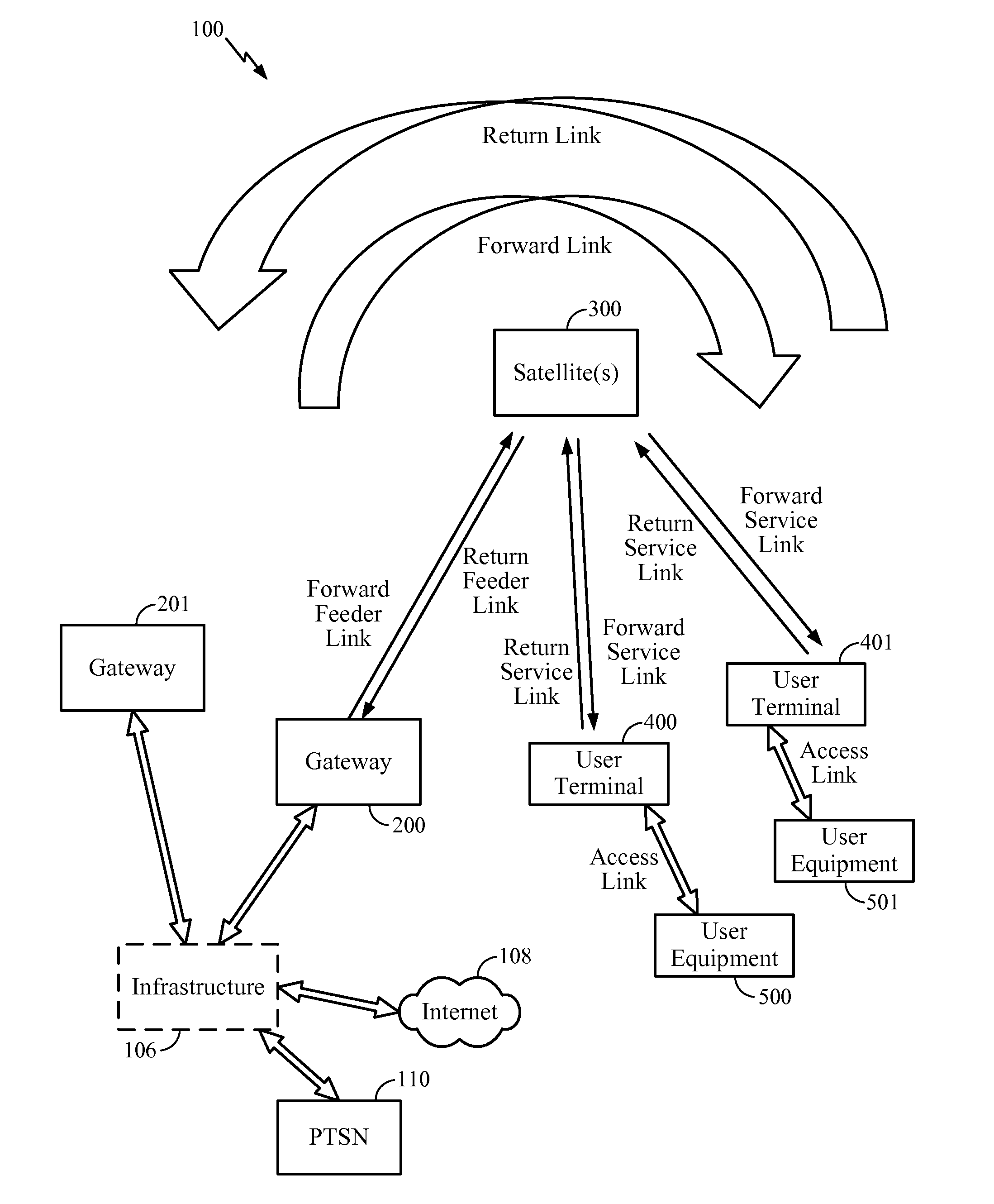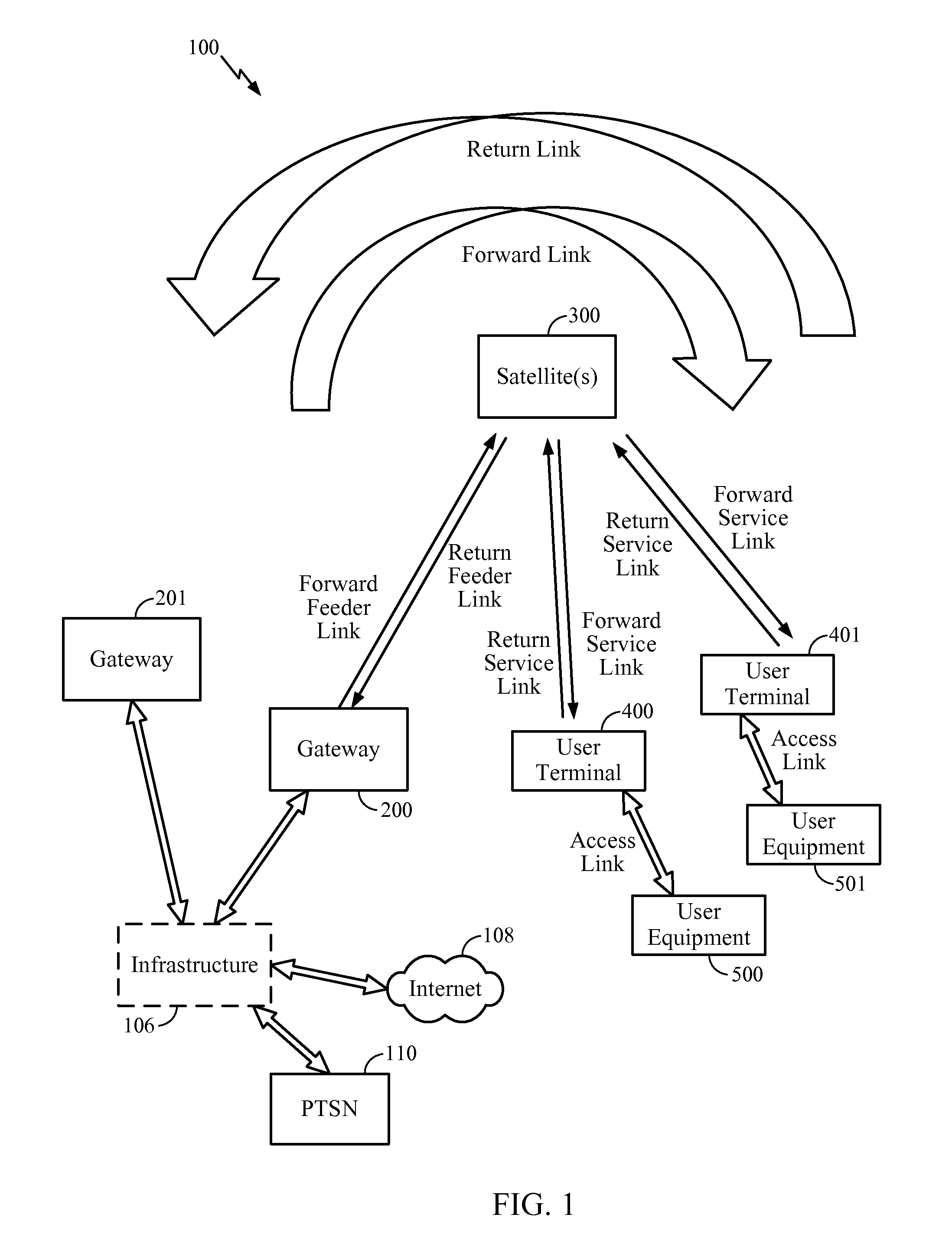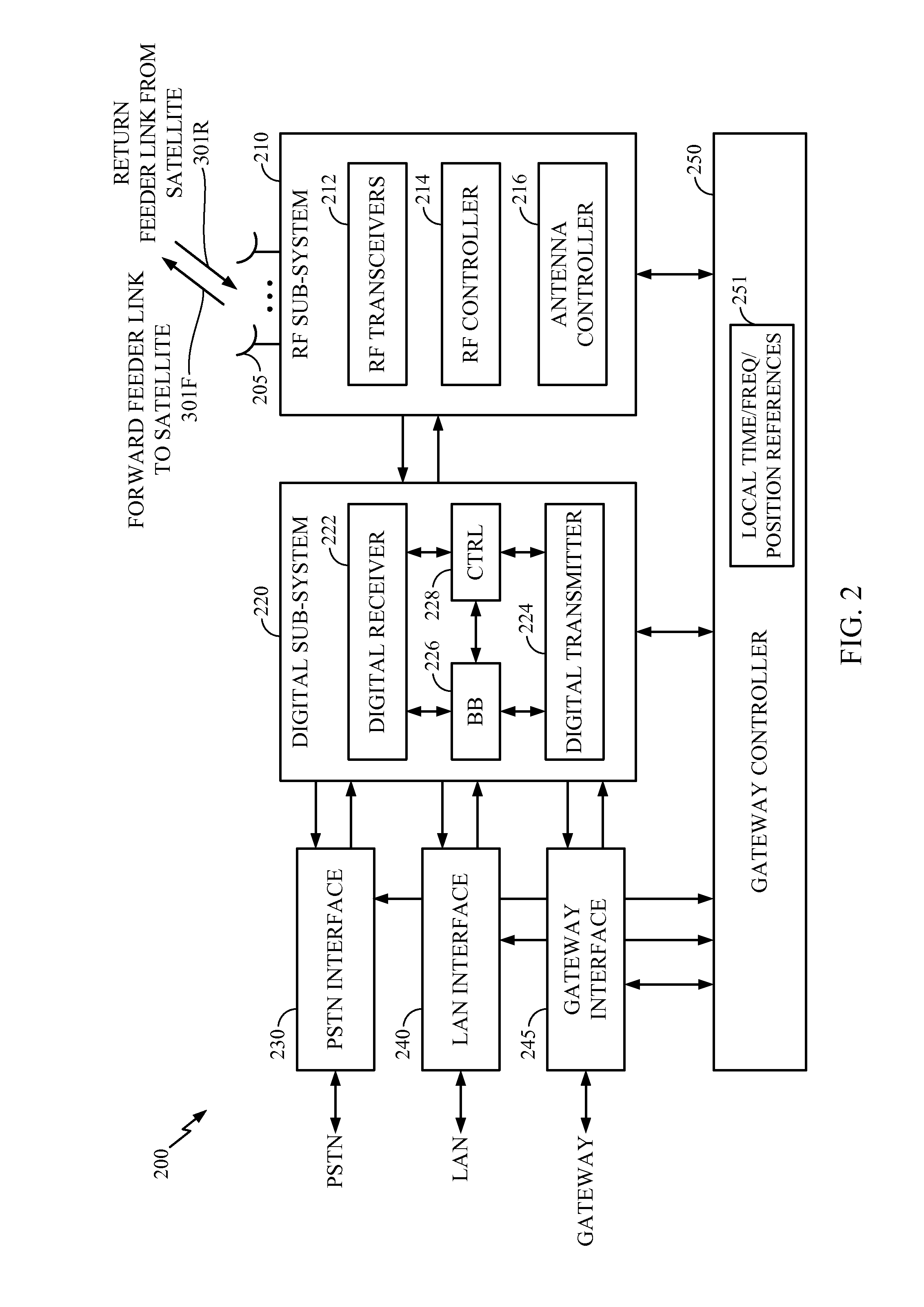Method and apparatus for avoiding exceeding interference limits for a non-geostationary satellite system
a non-geostationary satellite and interference limit technology, applied in the field of satellite communication, can solve the problems of unnecessary coverage gaps for the ngso satellite communication system, limited number of satellites that may be placed in the gso, and complicated calculation of the epfd at a given point on the earth's surfa
- Summary
- Abstract
- Description
- Claims
- Application Information
AI Technical Summary
Benefits of technology
Problems solved by technology
Method used
Image
Examples
Embodiment Construction
[0028]A non-geosynchronous satellite system includes satellites that adjust their beam patterns to prevent the EPFD at the Earth's surface from exceeding a specified limit. A satellite has an antenna (perhaps a multi-element antenna) to form a beam pattern comprising a set of beams in the footprint of the satellite, where in one implementation each beam is substantially elliptical in shape having a minor axis and a major axis, where the minor axes are substantially collinear and the major axes are substantially oriented east to west. For a satellite, power is reduced or turned off for a subset of the set of beams, wherein each beam in the subset is reduced at or below a corresponding power level such that when a beam is powered above its corresponding power level the EPFD an exceeds a specified limit at some point on the Earth's surface.
[0029]Aspects of the claimed subject matter are disclosed in the following description and related drawings. Alternate systems may be devised withou...
PUM
 Login to View More
Login to View More Abstract
Description
Claims
Application Information
 Login to View More
Login to View More - R&D
- Intellectual Property
- Life Sciences
- Materials
- Tech Scout
- Unparalleled Data Quality
- Higher Quality Content
- 60% Fewer Hallucinations
Browse by: Latest US Patents, China's latest patents, Technical Efficacy Thesaurus, Application Domain, Technology Topic, Popular Technical Reports.
© 2025 PatSnap. All rights reserved.Legal|Privacy policy|Modern Slavery Act Transparency Statement|Sitemap|About US| Contact US: help@patsnap.com



